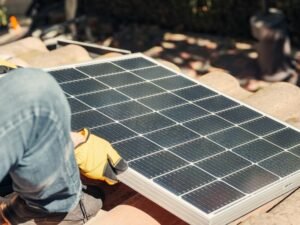Optimizing Energy Usage in the Manufacturing of Artificial Plants
Are you interested in learning how to optimize energy usage in the manufacturing of artificial plants? Let’s dive into the world of energy efficiency and discover ways to make the production process more sustainable and cost-effective.
Understanding Energy Consumption in Artificial Plant Manufacturing
When it comes to manufacturing artificial plants, energy consumption plays a significant role in both the environmental impact and the cost of production. Understanding how energy is used in the manufacturing process is crucial for identifying areas where optimization can be implemented.
Sources of Energy Consumption
In artificial plant manufacturing, energy is primarily consumed in the following areas:
-
Lighting: Artificial plants require controlled lighting conditions for optimal growth. Energy-intensive artificial lighting systems are often used in manufacturing facilities to provide the necessary light spectrum for plant growth.
-
Climate Control: Maintaining the right temperature and humidity levels is essential for the growth of artificial plants. Heating, ventilation, and air conditioning (HVAC) systems consume a significant amount of energy to create and maintain the ideal growing conditions.
-
Equipment: Machinery and equipment used in the manufacturing process, such as cutting machines, molders, and packaging systems, require electricity to function. The energy consumption of these machines varies depending on the type and efficiency of the equipment.
Analyzing Energy Consumption Data
To optimize energy usage in artificial plant manufacturing, it is essential to first analyze energy consumption data. By identifying which processes consume the most energy and where opportunities for improvement exist, manufacturers can develop targeted strategies to reduce energy consumption and increase efficiency.

This image is property of images.unsplash.com.
Implementing Energy-Efficient Practices
Now that we have a better understanding of energy consumption in artificial plant manufacturing, let’s explore some practical strategies for optimizing energy usage in the production process.
Energy-Efficient Lighting Systems
One of the most effective ways to reduce energy consumption in artificial plant manufacturing is to switch to energy-efficient lighting systems. LED grow lights, for example, consume significantly less energy than traditional fluorescent or incandescent lights while providing the same light output. By replacing outdated lighting systems with LEDs, manufacturers can reduce energy costs and lower their carbon footprint.
| Lighting Type | Energy Consumption (kWh) | Lifespan (hours) |
|---|---|---|
| LED Grow Lights | 100 | 50,000 |
| Fluorescent Lights | 150 | 10,000 |
| Incandescent Lights | 200 | 1,000 |
Optimizing Climate Control Systems
Improving the efficiency of climate control systems is another effective way to optimize energy usage in artificial plant manufacturing. By investing in smart HVAC systems that can adjust temperature and humidity levels based on real-time data, manufacturers can reduce energy waste and create a more sustainable production environment.
Upgrading Machinery and Equipment
Upgrading to energy-efficient machinery and equipment is a long-term investment that can result in substantial energy savings over time. Energy Star-rated equipment, for example, is designed to operate more efficiently and consume less electricity than standard models. By replacing outdated machinery with Energy Star-rated alternatives, manufacturers can reduce energy costs and improve overall productivity.

This image is property of images.unsplash.com.
Monitoring and Optimization
Continuous monitoring and optimization are essential for maintaining energy efficiency in artificial plant manufacturing. By tracking energy consumption data, identifying areas for improvement, and implementing targeted strategies, manufacturers can achieve long-term sustainability and cost savings.
Energy Consumption Monitoring Tools
Implementing energy consumption monitoring tools is a practical way to track energy usage in real-time and identify areas of concern. Smart meters, energy monitoring software, and IoT-enabled devices can provide valuable insights into energy consumption patterns and help manufacturers make informed decisions about energy optimization.
Regular Maintenance and Calibration
Regular maintenance and calibration of equipment are essential for ensuring optimal performance and energy efficiency. By scheduling routine maintenance checks and conducting regular calibration tests, manufacturers can prevent energy waste caused by equipment malfunctions and inefficiencies.
Employee Training and Awareness
Educating employees about energy-efficient practices and encouraging active participation in energy-saving initiatives can significantly impact energy usage in artificial plant manufacturing. By fostering a culture of sustainability and promoting energy awareness among staff, manufacturers can create a more energy-efficient workplace and drive continuous improvement.

This image is property of images.unsplash.com.
Conclusion
Optimizing energy usage in the manufacturing of artificial plants is a crucial step towards creating a more sustainable and cost-effective production process. By understanding energy consumption patterns, implementing energy-efficient practices, and monitoring energy usage data, manufacturers can reduce energy costs, lower their environmental impact, and improve overall efficiency. By taking proactive steps to optimize energy usage, manufacturers can create a more sustainable future for artificial plant manufacturing.



